 Hemorrhoids are a fairly serious disease characterized by varicose veins in the rectal area.
Hemorrhoids are a fairly serious disease characterized by varicose veins in the rectal area.
The development of this disease has been going on for several years.
The chronic form of the disease develops for various reasons.
Contents
- Features of the chronic form of the disease
- Types of the disease
- Features of the clinical picture
- What to do, how to be?
- Medication use
- Minimally invasive intervention - a modern approach
- Surgery is an extreme but effective measure of
- Possible complications
- Stop the disease on the approaches to
boundaries Features of the chronic form of the disease
Hemorrhoids are a disease that results in the formation of hemorrhoids. During the course of chronic hemorrhoids, the phase of remission and exacerbation alternates without fail.
The disease worsens if a person lifts weights, changes diet, lifestyle, experiences stressful situations. If the disease passes into a phase of exacerbation, then the general state of health worsens, and the symptoms of the disease increase.
Chronic hemorrhoids have 4 degrees of severity: 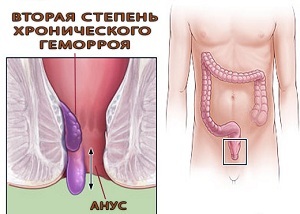
- on the first of them the patient does not experience discomfort and almost does not notice the symptoms;
- in the absence of timely treatment of hemorrhoids passes into the next stage - the second, on which the symptoms of the disease are already more pronounced;
- treatment in the last two stages of the development of this disease requires the use of surgical intervention.
Types of the disease
Clinical manifestations of the disease can be various, depending on which chronic hemorrhoids happen:
- combined;
- internal;
- external.
With the development of external hemorrhoids, the nodes are outside the lumen of the rectum.
Most often this form of the disease develops into the forms of manifestation of one of them - internal. Treatment of this disease is not difficult compared to others.
If the patient has chronic internal hemorrhoids, the affected nodes will be localized in the rectal lumen area.
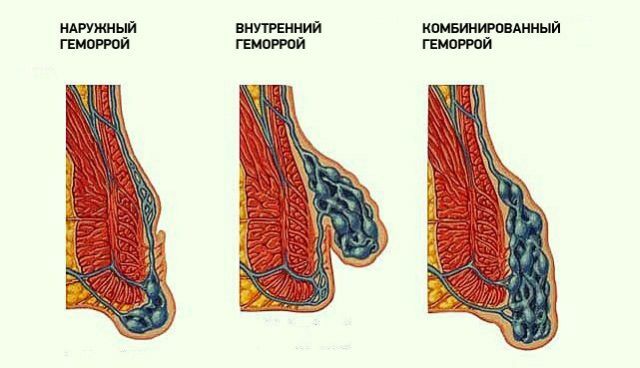
Chronic external, internal and combined hemorrhoids
The combined form of the disease is characterized by the presence of signs of both internal and external hemorrhoids.
With the development of this form of the disease, radical measures of treatment must be used. The detection of this form of the disease is most often observed at stages 3 or 4.
Features of the clinical picture
Chronic hemorrhoids are characterized by the presence of a large number of symptoms. That's why it will be easy for any patient to notice them.
Most often in patients in the anus area:
- itching;
- burning sensation;
- bleeding;
- painful sensations.
At first, this disease may not have symptoms at all. If the hemorrhoids flow into more complex forms, then the symptoms become pronounced.
In the early stages of chronic hemorrhoids, bleeding may occur even if there are no other symptoms completely. That is why very often pathology in the early stages is detected by chance.
If the disease is in remission, then bleeding occurs in the lowest possible amounts.
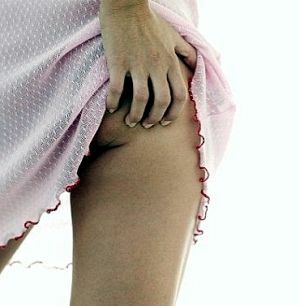 Mandatory symptoms of the chronic form of the disease are itching and burning. Many patients say they feel the presence of a foreign body in the region of the anus.
Mandatory symptoms of the chronic form of the disease are itching and burning. Many patients say they feel the presence of a foreign body in the region of the anus.
In some cases, patients can feel for hemorrhoids in the anus.
To determine the presence of chronic hemorrhoids in the late stages is simple enough due to the huge number of symptoms.
Self-medication in this case is not worth it. It is best to seek medical help from a doctor.
What to do, how to be?
Treatment of chronic hemorrhoids can be performed in patients in several ways, which depend on the degree of the disease.
The main purpose of treatment of the disease is to eliminate not only its manifestations, but also the possibility of further increase in hemorrhoids. Methods of treatment of chronic hemorrhoids are as follows:
- medicamentous;
- minimally invasive;
- surgical intervention.
Use of medicines
In the early stages of chronic hemorrhoids, conservative treatment is most often used. Therapy is carried out with the help of tablets, ointments, rectal suppositories.
These drugs include substances that limit the ability of 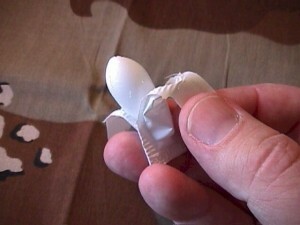 to form clots.
to form clots.
Patients are also prescribed drugs that help strengthen the vascular walls of the rectum.
Patients are prescribed anesthetic and anti-inflammatory medication.
If the disease is observed in pregnant women, then this requires the use of classical medical techniques.
Minimally Invasive Intervention - A Modern Approach
Very often, minimally invasive techniques are used to treat hemorrhoids. They are modern methods of treatment of the disease:
- In a number of cases, doctors use sclerotherapy .This method requires the introduction of medications that have a sclerosing effect, by injection.
- laser coagulation can also be used to treat this disease.
- Hemorrhoids can be removed with special latex rings .
These techniques are characterized by high efficiency. It is almost impossible to guarantee the absence of recurrences of the disease.
All these methods of treatment are highly effective only if chronic hemorrhoids develop in 1-2 stages.
Surgery is an extreme but effective measure of
In the 3rd and 4th stages of the disease, surgical intervention is most often used. This method of treatment is used only if others are ineffective.
During the decision to conduct an operation, physicians assess the risk and benefit to patients. This is because postoperative complications may occur.
The choice of method for the treatment of chronic hemorrhoids is carried out in a medical institution after a complete examination of the patient. This guarantees a high level of its effectiveness.
Possible complications of
Chronic hemorrhoids can give a variety of complications. Most often, patients are confronted with knot infringement, their 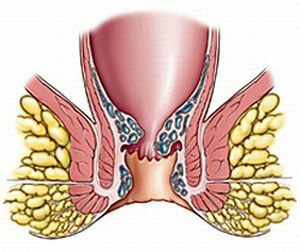 with thrombosis and the occurrence of bleeding.
with thrombosis and the occurrence of bleeding.
The last of these patients are observed after emptying, which is explained by the influence of fecal matter on the blood vessels of the rectum.
In the presence of an anal sphincter spasm, patients may experience infringement of hemorrhoids. If the vascular wall due to the regular fall of the hemorrhoids drop out, it leads to thrombosis.
Complications have a negative effect on the treatment of the disease. This is why the patient needs to use various preventive measures to avoid them.
Stop the disease on the outskirts of the
With the exacerbation of chronic hemorrhoids, many patients experience a variety of unpleasant sensations.
Some cases require hospitalization or surgery. In order to control the  disease, it is necessary to strictly follow certain rules.
disease, it is necessary to strictly follow certain rules.
Patient must follow the diet without fail. This will significantly enhance the effect of selected treatments.
Curing chronic hemorrhoids with a diet is unrealistic, but it is possible to reduce the manifestations of the disease.
The patient's diet should include minerals, fiber and vitamins.
Physical activity in general disease prevention plays an important role. This measure is required especially for those people who lead a sedentary lifestyle.
The patient is strictly forbidden to lift weights and physically overexert.
Chronic hemorrhoids are a serious disease that requires timely treatment. For the correct choice of methods, the patient must necessarily go to the medical center.
